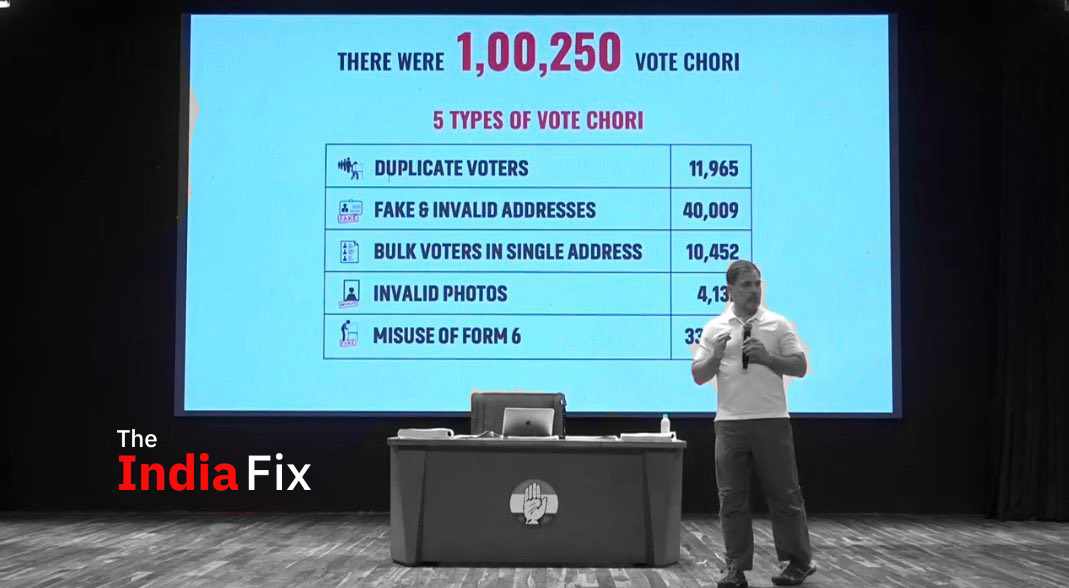
Welcome to The India Fix by Shoaib Daniyal, a newsletter on Indian politics. To get it in your inbox every Monday, sign up here. Have feedback, interesting links or Twitter threads? Send them to shoaib@scroll.in.
On May 14, the Modi government moved to ban wheat exports. This was, as is by now characteristic of the current administration, a knee-jerk move. Just a day earlier, the government had announced it would send a trade delegation to nine countries as a way to boost wheat exports.
Days later, the Union government moved to also restrict the export of sugar. With the smell of export bans in the air, speculation also swirled in the media of the government considering similar measures for cotton and rice.
It’s not too difficult to explain this sudden rush to ban agricultural exports: inflation. For April, retail inflation was the highest it has been in the Modi era. The last time it was this alarming, Manmohan Singh was India’s prime minister. Moreover, this has been building up: inflation has been high for two years now.
Asleep at the wheel
Inexplicably, the powers-that-be had curiously disregarded high inflation for so long. Right till March, the governor of the Reserve Bank of India kept insisting that inflation was transitory. The Union government too kept up its policy of unusually high fuel taxes, thus furthering inflation (given its role as an input in nearly every sector, fuel prices are an especially important factor for price rise).
With inflation now reaching levels that were once high enough to dislodge the United Progressive Alliance government in 2014, the Modi government has woken up – only to transfer much of the burden on controlling inflation onto the shoulders of India’s already beleaguered farmers.
High exports, quite obviously, mean higher incomes for farmers. International prices were one reason that market prices of wheat in India were higher than even the minimum support price – the rate at which the government buys from the farmer in certain states.
In effect, export bans are an implicit tax on farmers in order to subsidise the Indian food consumer. The farmer is forced to forgo his rightful income that would be realised if the free market were allowed to operate in agriculture so that food prices remain low.
Taxing the farmer
This incident highlights just how tightly regulated Indian agriculture is. Given the political importance of inflation – high prices can be lethal for a ruling party at election time – governments have put in a stifling range of controls in order to keep prices low for consumers by making sure farm incomes, in turn, remain depressed.
To do this, the government imposes strict regulations on imports and exports as well as the marketing of agricultural produce in India. Lazy, urban stereotypes in India often characterise farmers as a highly subsidised class given the existence of instruments such as fertiliser subsidies. Once agricultural policy is seen holistically, however, calculations show that the measures such as export bans end up taking more from the farmer than the government gives by way of subsidies.
India actually ends up taxing farmers rather than subsidising them – a rare country to do so.


As can be seen in the above OECD chart, producer support estimates, or the annual monetary value of gross transfers from consumers and taxpayers to agricultural producers, is -6% in India. In contrast, it is 24% in the Philippines and 15% in China.
Notably, even this figure might be an underestimate since it does not take into account the massive losses to the Indian farmer due to a recent spate of cattle slaughter bans. The cattle trade is central to Indian agriculture and by ending it in many states, not only has the farmer had to forgo income but stray cattle have caused significant crop losses.
Hurting the weak
This implicit tax on farm incomes comes at the same time as Indian agriculture is in crisis. Farming in India is characterised by low mechanisation, small plots and very little use of modern techniques. As a result, productivity is low. The yield of rice in India – the country’s largest crop – for example is lower than China and even Bangladesh.
This, in turn, means agricultural incomes are incredibly low in India. A survey conducted by the National Statistical Office for the calendar year 2019, for example, found that the average daily income for an agricultural household was under Rs 280 ($3.6) per day. Given the average size of a rural household in India is five, this comes to a measly Rs 56 ($0.72) per person per day.
This state of affairs goes a long way in explaining both farmer discontent, which often finds expression in different forms, such as agrarian castes making demands for reservations, as well as farmer suspicion over government efforts to bring in so-called reforms. Ironically, just a day before the Modi government passed three farm laws in 2020, claiming that they would liberalise agriculture by bringing in the free market, it also banned the export of onions. A month later, it also imposed stock limits on onions. Soon after, the BJP-controlled government of Uttar Pradesh ordered potato cold storages to offload stock.
It is thus hardly surprising that farmers looked up the new laws with suspicion, refusing to believe the government’s pitch that they were meant to liberalise agriculture given that the government’s actions at the very same time were meant to do just the opposite. Instead farmers viewed it simply as a way to even further reduce government support and bring in large business interests into the agricultural sector. Eventually, Prime Minister Modi was forced to take back the laws.
Shoot oneself in the foot
Note that even as agriculture remains unreformed and farmer incomes under attack by the government, it is still the country’s largest employer. In fact, during India’s catastrophic Covid-19 lockdown in 2020, it was agriculture that absorbed the workers who were cruelly expelled from India’s cities. As a result, it was the only sector to grow during 2020-’21. In fact, as the Indian economy has slowed since 2016, agricultural employment has risen.
Controlling inflation should be (and is) a major priority of the Union government. But given the size of agricultural employment and the already depressed state it is in, how wise is it to place the burden of inflation control on the shoulders of the Indian farmer? If inflation control is the aim, why should it not be done at the consumer end, with the government providing subsidies to lower the price of this food bill?
For the ruling party, the decision to force farmers to subside consumers is an easy one. The consumer has far more votes than the farmer. Yet, putting such severe economic pressure on such a large proportion of already-struggling Indians is hardly smart economic policy or, for that matter, humane governance.






















Write a comment ...